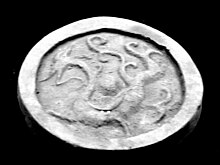I often wonder to myself why people jump to conclusions before the shoe,
as the lace in the buckle is snapping that trap to the as sump shin as a trunk,
the well on the Flame is still a ring around the base of Entry to Thunders streak,
yet should the tide rise and the chart stare does not the Ocean still work its plank on slate??,
did not the Sands dial that pebble to be a granite marble on the mountains lane??,
shall not the road to roam consist of more that tread people that cleat to as per burr grrs brain??,
did not the trench in the Mucker familiar the Horse to the Rider in that storm of Glacier freeze??,
crowd dead Men towel a Tea has just brought the bed to the rake as a per pen dick ewe loop.
Should the Universe throw to the Planets a state of comprehension via Oxygen Nation,
does that bring the Orca to scratch and the beach to a Stand as the throttle??,
is not the rein on direction of growth to the complete just to be able to look at the Milky Way on the keys??
Sadly Humanity drops the Paints to date signature stink,
religion for the dario and a mirror to reflect dense sorrow for the buckets Tram,
dip the meant to coin a purse a envelope to the foot hold??,
pew on that is the verbiage that rinses soap to box crates.
Nail to penny place a measure on the weight of what is a swing on the impact of the to by for,
as the inch can no longer represent the proper prime to measure the snore its society on the sheets at shrank,
not even the lumber yard is able to cut the timber for the original deed,
as should anyone care to In Vest go to the locale Chop Shop of Wood detail the Foot is now a speak,
that construction that now says that Particle Board is plywood on the stile,
recycle that with a wisdom for on the Toothpick its the Nail File that will empty sku.






